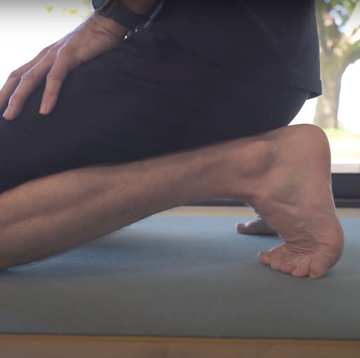Joseph Cheptegei has only raced four times in 2020, but he has made each opportunity count by breaking three world records. His latest performance broke a 15-year-old world record in the men’s 10,000 metres.
Yet while watching Cheptegei effortlessly break records is awe inspiring, one thing that has caught the eye of countless runners is the Ugandan distance runner's pronation.
Runners World, Part of the Hearst UK Wellbeing Network Gareth Cole about Cheptegei's running style and why pronation isn't necessarily something for any of us to worry about:
What is pronation?
'Pronation is the multi plane action of the foot and ankle in the landing phase of the gait,' explains Cole. 'Anatomically it’s described as subtalar eversion (heel rolls in), ankle dorsiflexion (knee goes over the toes) and forefoot abduction (your toes point away from you).'
'To simplify the pronation phase of running is when the foot hits the ground and the runner absorbs their body weight plus gravity ready for the push off "supination phase"'.
Why do we associate pronation with being bad?
'Pronation and "Over pronation" has been historically perceived as being one and the same thing and the cause of a myriad of running injuries,' says Cole. 'Ironically the studies suggest the complete opposite with the "Under pronators" having the much higher risk of injury.'
'The reason for this is due to the foot being "too rigid" and not allowing ground reaction forces to dissipate through many small joints of the foot.'
Cheptegei has broken three world records this year, while pronating quite dramatically, there have been some claims that he would run even faster should this pronation be corrected, what do you think about this?
'If you look closely at Cheptegei you’ll see that he lands on his mid to forefoot which defines him as a "mid foot pronator" and not a “foot flat to the floor pronator” which is very different,' say Cole.
'Again, to simplify, the longer your foot is on the floor when you land the more energy and force you have to generate to return the foot back ready for the push off phase and Cheptegei spends very little time on the floor.
'The final point to make on this is that Cheptegei has adapted to his unique running style over the countless hours of training runs and to start tweaking would/could highly increase the risk of injury and hence reduced training runs. So, personally, I think that if it isn't broken, leave well alone.'
Resting heart rate? Sign up to our newsletter How to tackle tight hamstrings.













